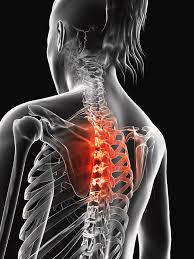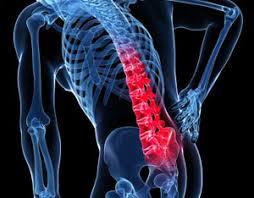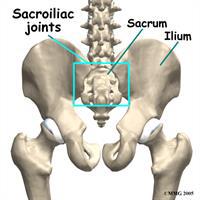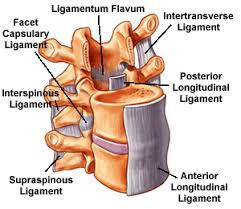ACUTE BACK PAIN
- Matthew Craig
- Nov 7, 2019
- 5 min read
Updated: Apr 30, 2020
Author: David Hagtharp – The University of Sydney Masters of Physiotherapy Student
Co-Authors: Jack Rayment and Paul Dardagan – bounceREHAB Physiotherapist
Did you feel a twinge in your back at the gym or on the tennis court? Maybe a sharp or shooting pain when unloading the dishwasher or getting out of the car. Did you just wake up one morning in agony and have no idea what happened?
A bit about Acute back pain:
85% percent of us will experience an acute episode of back pain in our lifetime. Because it is so common, the physio’s here at bounceREHAB treat acute back pain every day. For some people, pain in the first 48 hours can be very severe and very restrictive, causing them to fear a serious spine injury. The good news is that with the right advice and treatment, episodes of acute back pain tend to take only a few weeks to a couple of months to fully recover, and people begin to feel much better as inflammation subsides. The UK clinical practice guidelines state that “90% [of cases] will recover within six weeks”.
This article aims to provide some information to people who’ve tweaked or twinged their back, likely by bending or twisting in an odd way. This is different to a more traumatic injury such as a bike/car accident, a fall, or a direct blow to your back.
Here are some of the weird and wonderful ways people have hurt their back that we’ve heard at bounceREHAB:
Bending over to pick up a water bottle
Unpacking the dishwasher
Stretching while yawning
Taking the L-plates off the car
Waking up in strange position after a big night
Picking up the soap in the shower
Getting off an elephant
Why does my Back hurt?

Inflammation is an important part of the healing process as it brings chemicals which facilitate tissue repair. Inflammation also makes the area around the injury sore and sensitive to touch or move. This helps remind us to be cautious of the area while it heals and protects us from doing further harm. The scientific name for this is called hypersensitivity or peripheral sensitisation. It’s most likely that the initial injury is joint-related, and as a result the first 48 hours will bring inflammation in the area surrounding the joint. This is called the acute phase and it is when the pain is normally the worst as inflammation can irritate the surrounding structures such as muscles and nerves.
Symptoms:
Pain directly on the spine
Pain on one side of the back (unilateral pain)
Pain on both sides of the back (bilateral pain)
Unable to sit, stand or walk longer than a few minutes.
Scared of moving, especially bending or twisting.
Muscle spasms (back spasms): Increases in muscle activity in the acute phase may cause muscle twitching or spasms. These can last anywhere from a few seconds to 15 minutes or longer, and the pain can vary from annoying to excruciating.
Radicular pain: Irritation to nerve roots exiting the spinal column can cause radicular pain, which travels along the course of the nerve after it exits the spine (usually the pain travels down into the buttocks or leg). This type of pain is more common when there is a disc bulge, because the bulge can put pressure on nerve roots exiting the spine
Do I need an MRI or an X-ray?
Because there are other factors to consider which are secondary to the original injury (e.g. inflammation), there is usually not just one structure that is responsible for your back pain. This is why you may have heard health professionals refer to your pain as ‘acute non-specific back pain’. Nevertheless, a physiotherapist will be able to perform an assessment to determine the most likely cause of initial injury.
The most common structures injured in an episode of acute back pain are:
What can I expect? How long will it take to get better?
Research by Downie et. al (2016) studied 1500 people with an episode of acute back pain over a 12-week period to see how well, and how quickly they recovered. Here are some of the findings:
35% of people had fully recovered in just 2 weeks.
70% of people had fully recovered after 12 weeks.
14% of people’s pain improved but hadn’t yet made a full recovery after 12 weeks.
10% had fluctuating pain levels.
only 5% had high-level pain over the 12 weeks.
Time off work?
Not everyone needs time off work, it depends on the severity of the back pain and their work duties. A day or two off work while everything settles can be a good idea. Even when there has been a severe episode of pain, people will usually return to work within one month (Pengel et al., 2003). The physiotherapists at bounceREHAB are experienced at helping you to get back to your normal life, ASAP.
How can we help?
A 2017 series published in The Lancet (one of the oldest and most prestigious medical journals) demonstrated that it is very common for back pain to be treated poorly, and not in-line with best evidence and clinical practice. The table below summarises which treatments are and aren’t endorsed by the evidence.

The treatment provided by physiotherapists at bounceREHAB is supported by the research and can help make you feel better and move more freely.
Education and Exercise
Research has shown that the most important treatment for acute back pain is education and self-management strategies (Foster et al., 2018). A physiotherapist can help you understand why you are so sore, as well as what you should and shouldn’t be doing in order to get better as soon as possible and reduce the likelihood of developing persistent or chronic pain. It is important to stay as active as possible without really aggravating your back pain. This is the reason why bed rest is not usually recommended. A physiotherapist can give you exercises which encourages movement that is appropriate to where you are in your recovery.
Soft tissue massage and Joint mobilisations:
During an acute episode of back pain, surrounding muscles and joints tend to become tight and stiff. Whilst initially the injured area may be too sore to touch, relieving tension and stiffness in surrounding muscles and joints can help reduce your pain, and increase your pain-free movement.
Dry needling:
Like soft tissue massage and joint mobilisations, dry needling is an effective adjunct to treatment for acute back pain (Foster et al. 2018), and is another way of releasing muscle tension and preparing the tissues for recovery.
Other:
Support belt
Lumbar support taping technique
Wearable heat patch
Conclusion
The physiotherapists at bounceREHAB have extensive experience and ongoing training. You can be confident that treatment is completely one on one and evidence based. Our underlying intent is to guide our patients to self-management status.
References:
Brinjikji, W., Luetmer, P. H., Comstock, B., Bresnahan, B. W., Chen, L. E., Deyo, R. A., Halabi, S., Turner, J. A., Avins, A. L., James, K., Wald, J. T., Kallmes, D. F., … Jarvik, J. G. (2014). Systematic literature review of imaging features of spinal degeneration in asymptomatic populations. AJNR. American journal of neuroradiology, 36(4), 811-6.
Downie, A. S., Hancock, M. J., Rzewuska, M., Williams, C. M., Lin, C. W. C., & Maher, C. G. (2016). Trajectories of acute low back pain: a latent class growth analysis. Pain, 157(1), 225-234.
Foster, N. E., Anema, J. R., Cherkin, D., Chou, R., Cohen, S. P., Gross, D. P., . . . Woolf, A. (2018). Prevention and treatment of low back pain: Evidence, challenges, and promising directions. The Lancet, 391(10137), 2368-2383. doi:http://dx.doi.org.ezproxy.lib.uts.edu.au/10.1016/S0140-6736(18)30489-6
Koes, B. W., van Tulder, M. W., Ostelo, R., Burton, A. K., & Waddell, G. (2001). Clinical guidelines for the management of low back pain in primary care: an international comparison. Spine, 26(22), 2504-2513.
Pengel Liset H M, Herbert Robert D, Maher Chris G, Refshauge Kathryn M. Acute low back pain: systematic review of its prognosis BMJ 2003; 327 :323




















